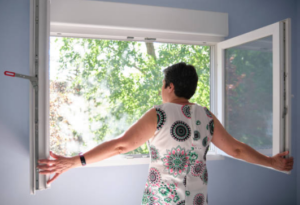The increasing levels of outdoor pollution caused by vehicle emissions and fossil fuel burning are enough to make it difficult to stay indoors. Surprisingly, the air quality inside your home is not as healthy and clean as it would like. While you might not have paid much attention to the air quality of your home in the past, you can check the explanation here, which has highlighted the need for all parts of your home to be as safe and clean as possible. In this post, we share some of the essential measures to improve the air quality of your home.
Eliminate Air Pollutants
This is likely the first step: to search for the source of indoor air pollution. By doing so, you can remove anything in your home that’s causing indoor air quality problems like pesticides, paint, combustion products, chemicals, and even excessive moisture. It can be tricky, but you can bring these indoor air pollutants from the house into the garage. Your pet can make it even more difficult. Bear in mind that even a sick family member can also cause air pollution, so it would be better to seclude your family’s patient.
Minimize Scented Items
 We’re sorry to say it, but diffusers, air fresheners, and candles can cause poor air quality in your home. Many contain volatile organic compounds (VOCs) that can cause irritation and headaches in the eyes, nose, and throat. VOCs can also be found in cleaning products, cosmetics, and degreasers. But if you are fond of aromatic smells, try to minimize them. For instance, you can place them close to the source of indoor odors, like the restroom, the kitchen, attic, or basement.
We’re sorry to say it, but diffusers, air fresheners, and candles can cause poor air quality in your home. Many contain volatile organic compounds (VOCs) that can cause irritation and headaches in the eyes, nose, and throat. VOCs can also be found in cleaning products, cosmetics, and degreasers. But if you are fond of aromatic smells, try to minimize them. For instance, you can place them close to the source of indoor odors, like the restroom, the kitchen, attic, or basement.
Or try to replace them with decorative indoor plants. Aside from the fact that plants are ideal decorations with the touch of nature, they are also proven to help increase oxygen inside your home and purify the air.
Get Rid of Molds
Molds are one of the worst problems that a homeowner would encounter. Aside from the fact that it could ruin your indoor air quality, mold exposure can cause many health problems, such as sore throats and rashes, headaches, dry eyes, and rashes. Controlling the humidity in your home is the best way to eliminate mold, especially in bathrooms and kitchens. Experts recommend turning on the bathroom exhaust fan immediately after bathing to reduce humidity.
Increase Ventilation
 The air inside your home is likely more polluted than the air outside. Experts point out that good ventilation ensures that allergens and harmful air pollutants can circulate outside, limiting human exposure. The EPA (Environmental Protection Agency) recommends opening windows and circulating fresh air in the home, even in the coldest months. A ventilation system can also lower your home’s humidity, reducing your reliance on your air conditioner and extending its lifespan.
The air inside your home is likely more polluted than the air outside. Experts point out that good ventilation ensures that allergens and harmful air pollutants can circulate outside, limiting human exposure. The EPA (Environmental Protection Agency) recommends opening windows and circulating fresh air in the home, even in the coldest months. A ventilation system can also lower your home’s humidity, reducing your reliance on your air conditioner and extending its lifespan.
Get a High-Quality Air Filter
Using an air filter system is another effective way to tackle stale indoor air. A higher quality air filter will trap more particles. However, smaller particles will cause the filter to clog more quickly, which means you’ll need to replace it more often. Experts recommend changing your filter every 30 days or six months if you have a larger filter. And always remember to keep spare filters on hand in case you need them.

